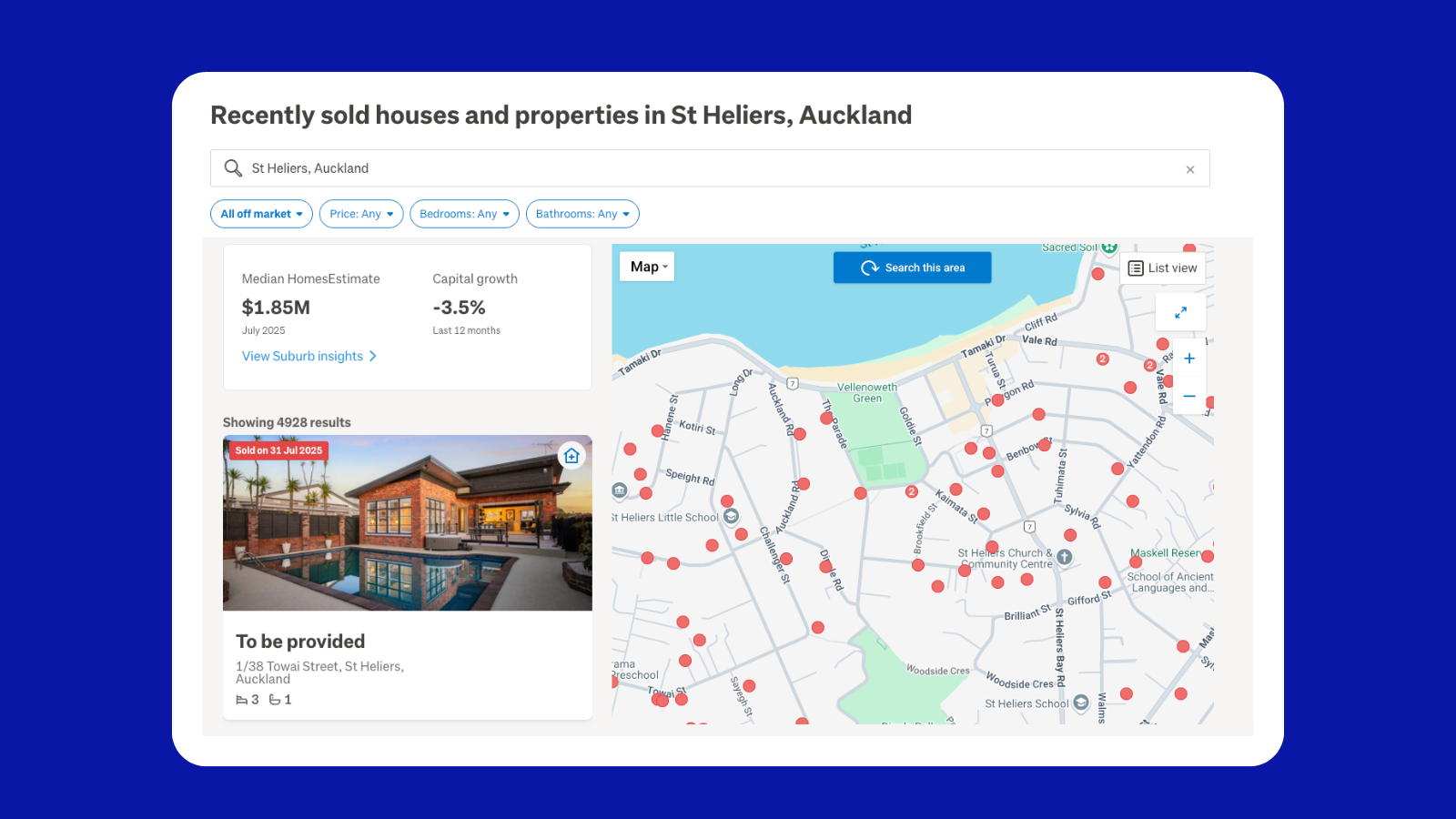Discover
How to Search Smarter on Trade Me Property
Learn how to use Trade Me Property tools to find listings faster, stay updated, and make smarter property decisions.

If you’re on the hunt for your next home, investment, or just dream scrolling, it pays to know how to use Trade Me Property to its full potential. Here’s a quick guide to help you search smarter, stay informed, and make confident decisions, whether you're weeks away from buying or just getting started.
1. Watchlist Your Favourites
Spotted a listing you love? Hit the heart icon to add it to your Watchlist. This does more than just save it for later, it unlocks a bunch of handy notifications to keep you informed:
- Price changes: If a property is juuust out of reach, add it to your watchlist to get a price drop alert. You'll be among the first to know if the vendor adjusts their asking price; no need to keep checking back.
Status updates: You’ll be alerted if the property is marked as sold or withdrawn.
- Open home times: Get notified as soon as open home dates or times are added, so you can plan your weekends with ease.
It’s the easiest way to track your top picks, no spreadsheets or sticky notes required.
2. Save Your Searches
Create and save your custom searches based on what matters to you. Location? Price? Number of bedrooms? School zones? You name it.
Once saved, you’ll get automatic email updates when new listings match your criteria. It’s like having your own personal property scout.
3. Use Property Insights
Our Property Insights tool gives you extra context that can help you make smarter decisions, whether you’re buying your first home, comparing investment properties, or just curious about a suburb.
Here’s what you’ll find:
- Estimated property value: See what the property might be worth based on comparable sales and market trends.
- Recent sale history: Check if (and when) the property has been sold before, and for how much.
- Comparable sales: View similar properties that have sold nearby, so you can get a feel for the going rate in the area.
- Rental estimates: Considering it as an investment? Get a sense of the weekly rent it might fetch.
- Suburb statistics: Explore median prices, recent sales activity, and market trends for the area.
- School zones: See what schools the property is zoned for and how they’re rated, a big factor for many buyers.
- Council and capital values (where available): Understand how the property stacks up against its official valuation.
Using insights like these means you're not just relying on the listing description, you’re armed with real data to guide your decision-making.
4. Explore with Map View
Looking for something in a very specific spot? Use the Map View to see where listings are located and draw your own custom area on the map to narrow it down.
5. Never Miss an Open Home
Spotted an open home that fits your weekend plans? Add it directly to your preferred calendar straight from the listing.
That way, you can easily slot viewings into your day and avoid missing out on properties you're keen to see.
Author
Advice & Tools
Search
Other articles you might like









